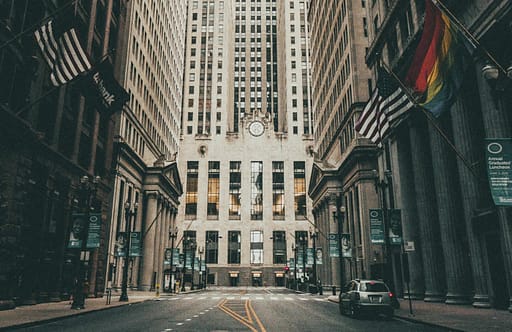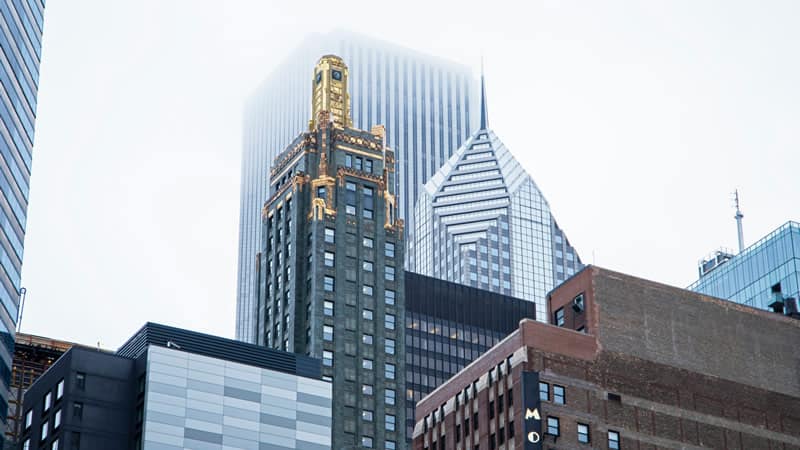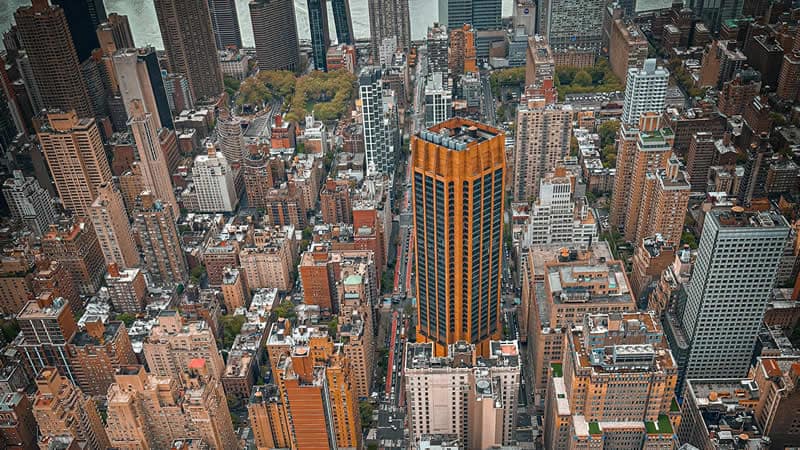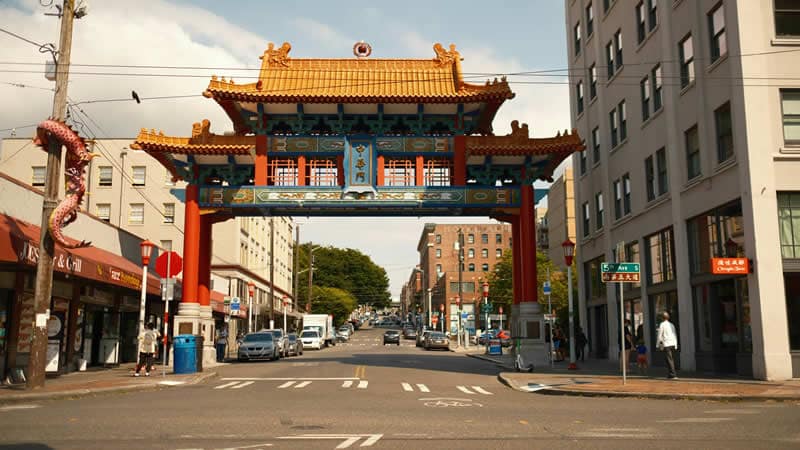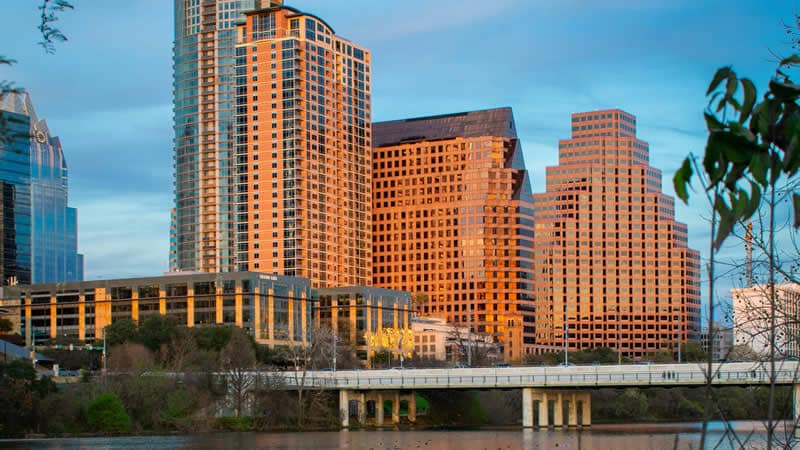U.S Cities with the Best Architecture
Architecture serves as a mirror reflecting the history, culture, and aspirations of a city. In the U.S., certain cities are renowned for their architectural prowess, each offering a unique blend of historical elegance, modern innovation, and striking design. These cities stand out not just for their iconic landmarks but for their ability to merge traditional styles with contemporary trends, creating environments that are both functional and aesthetically pleasing. In this exploration of architectural excellence, we will delve into cities where the built environment is as dynamic and inspiring as the communities they house.
Chicago, IL: The Birthplace of Modern Architecture
Chicago is celebrated as a cornerstone of modern architecture, and it’s easy to see why. The city’s skyline is a testament to its innovative spirit and its role in shaping the evolution of architectural design. Following the Great Chicago Fire of 1871, which devastated much of the city, Chicago was presented with a unique opportunity to rebuild from the ground up. This led to the development of the skyscraper, with the city leading the charge in steel-frame construction.
The Home Insurance Building, completed in 1885, is recognized as the world’s first skyscraper, setting the stage for the city’s architectural future. This early innovation is mirrored in the city’s more recent landmarks, such as the Willis Tower (formerly Sears Tower) and the John Hancock Center. Both skyscrapers continue to define Chicago’s skyline with their towering heights and sleek, glass exteriors.
Chicago’s architectural charm extends beyond its modern skyscrapers. The Chicago Cultural Center, known for its stunning stained glass dome, and the Art Institute of Chicago, which marries classical architecture with modernist touches, highlight the city’s commitment to preserving its rich historical legacy while embracing new design philosophies. Architectural tours, such as those offered by the Chicago Architecture Center, provide a comprehensive view of the city’s influential design history and ongoing innovations.
Must-Visit Architectural Sites in Chicago
- Willis Tower (formerly Sears Tower): A landmark skyscraper offering breathtaking views from its Skydeck and showcasing Chicago’s architectural innovation.
- Chicago Cultural Center: Known for its stunning stained glass dome and beautiful architectural details, this building is a gem of late 19th-century design.
- The Art Institute of Chicago: A historic institution with a blend of classical and modernist architecture, housing an extensive collection of art.
New York City, NY: A Melting Pot of Architectural Styles
New York City is a sprawling testament to architectural diversity and grandeur. The city’s skyline, known worldwide, features an eclectic mix of historic landmarks and cutting-edge modern designs, reflecting its status as a global cultural and financial hub.
The Empire State Building, completed in 1931, remains a quintessential symbol of the city with its Art Deco elegance and towering presence. This iconic skyscraper, alongside the sleek modern lines of the One World Trade Center, demonstrates New York’s seamless blend of historical and contemporary styles. These buildings represent not only architectural achievement but also the city’s resilience and innovation.
New York’s architectural uniqueness is also evident in its diverse neighborhoods and cultural institutions. The High Line, an elevated park repurposed from a historic freight rail line, integrates green space with contemporary design and public art installations. Meanwhile, the Guggenheim Museum, designed by Frank Lloyd Wright, stands out with its distinctive spiraling form, offering a modernist counterpoint to the city’s traditional architectural elements.
Things to see in New York City
- Empire State Building: An iconic Art Deco skyscraper with panoramic views of the city from its observation decks.
- One World Trade Center: A modern architectural marvel symbolizing resilience and innovation, offering stunning views and exhibits.
- The High Line: A transformed elevated rail line featuring unique urban design and green spaces, integrating art and nature.
San Francisco, CA: A Blend of Victorian Charm and Modern Innovation
San Francisco’s architectural landscape is a fascinating blend of historic Victorian charm and contemporary innovation. The city’s commitment to preserving its unique character while embracing modern design is evident throughout its neighborhoods and landmarks.
The Painted Ladies, a row of Victorian houses located on Alamo Square, are among the city’s most iconic architectural features. These colorful, ornate homes offer a glimpse into the city’s 19th-century design sensibilities and contrast beautifully with the modern skyline. In addition to these historical treasures, the Transamerica Pyramid stands as a symbol of San Francisco’s modern era with its distinctive triangular design.
Recent developments in San Francisco also showcase the city’s forward-thinking approach to architecture. The Salesforce Tower, with its sleek glass facade, has become a centerpiece of the city’s financial district. The Exploratorium, an interactive museum designed with a blend of cutting-edge architecture and educational exhibits, reflects San Francisco’s dedication to combining form and function in its urban spaces.
Architectural Sites in San Francisco
- Painted Ladies: Iconic Victorian houses with colorful facades, offering a picturesque view of historic architectural style.
- Transamerica Pyramid: A distinctive triangular skyscraper that defines San Francisco’s modern skyline.
- Salesforce Tower: A sleek, modern high-rise representing the city’s commitment to contemporary architecture and innovation.
Miami, FL: Art Deco Elegance Meets Modern Flair
Miami is renowned for its vibrant architectural scene, which combines Art Deco elegance with modern flair. The city’s South Beach district is particularly famous for its well-preserved Art Deco Historic District, where pastel-colored buildings with geometric designs and decorative elements transport visitors to the 1920s and 1930s.
The Art Deco architecture of South Beach is characterized by its bold colors, streamlined shapes, and neon signage, creating a distinct visual identity that has become synonymous with Miami’s cultural image. Buildings such as the Colony Hotel and the Delano South Beach exemplify this iconic style, attracting visitors with their glamorous façades and historical charm.
In addition to its historic district, Miami also features contemporary designs that embrace the city’s tropical climate. The Pérez Art Museum Miami (PAMM), designed by Herzog & de Meuron, integrates sustainable design principles and connects with its waterfront location through expansive glass walls and innovative structural elements. Miami’s architectural landscape is further enriched by modern skyscrapers like Miami Tower, which adds a sleek, contemporary touch to the city’s skyline.
Must-See Architectural Sites in Miami
- Art Deco Historic District: A collection of pastel-colored buildings with classic Art Deco features, located in South Beach.
- Pérez Art Museum Miami (PAMM): A modern museum with a design that integrates natural elements and offers stunning waterfront views.
- Miami Tower: A striking skyscraper featuring a sleek, modern design that adds to the city’s skyline.
Seattle, WA: Innovative Designs and Natural Integration
Seattle’s architectural scene is distinguished by its innovative designs that harmonize with the city’s natural environment. The city’s commitment to integrating modern architecture with its scenic surroundings is evident in several landmark buildings and public spaces.
The Space Needle, built for the 1962 World’s Fair, is one of Seattle’s most iconic structures. Its futuristic design, characterized by a slender spire and rotating restaurant, offers panoramic views of the city and its natural landscape, including Puget Sound and Mount Rainier. The Space Needle remains a symbol of Seattle’s forward-thinking approach to design.
Seattle’s focus on sustainability and environmental integration is exemplified by the Bullitt Center, known as the “greenest commercial building in the world.” This office building features renewable energy systems, water conservation technologies, and natural ventilation, reflecting the city’s commitment to eco-friendly design. Additionally, the Chihuly Garden and Glass exhibit showcases the work of artist Dale Chihuly in a striking pavilion that complements the city’s natural beauty with vibrant glass sculptures.
Check Out These Sites in Seattle
- Space Needle: A futuristic tower with panoramic views and a rotating restaurant, symbolizing Seattle’s innovative spirit.
- Bullitt Center: An eco-friendly office building known for its sustainable design and energy efficiency.
- Chihuly Garden and Glass: A museum featuring vibrant glass sculptures that blend art with natural surroundings.
Austin, TX: Contemporary Innovation Meets Historic Charm
Austin’s architectural landscape is a dynamic mix of contemporary innovation and historic charm, reflecting the city’s rapid growth and cultural evolution. Known for its creative spirit and entrepreneurial energy, Austin’s buildings range from sleek modern high-rises to historic structures, each contributing to the city’s unique identity.
The Austin City Hall, designed by architect Enrique Norten, exemplifies the city’s contemporary architectural ethos. Its angular design and innovative use of materials serve as a symbol of Austin’s commitment to modern design principles. In contrast, the Texas State Capitol building, with its ornate 19th-century architecture, represents the city’s historical roots and architectural heritage.
Austin’s integration of art into public spaces is also noteworthy. The “Greetings from Austin” mural celebrates the city’s vibrant culture with colorful, large-scale artwork. The Blanton Museum of Art, designed by architect Jack L. Hayes, features a modernist design that harmonizes with the city’s natural environment while showcasing an extensive art collection.
Architectural Sites in Austin Worth Visiting
- Austin City Hall: A modern architectural marvel with angular designs and sustainable features, reflecting the city’s innovation.
- Texas State Capitol: A historic building with ornate 19th-century architecture, symbolizing Austin’s rich heritage.
- Blanton Museum of Art: A museum with a modernist design that complements its extensive art collection and natural surroundings.
The architectural uniqueness of cities such as Chicago, New York City, San Francisco, Miami, Seattle, and Austin highlights the diverse ways in which urban environments can reflect cultural values, historical contexts, and innovative visions. From the historical grandeur of Chicago’s skyscrapers to the modern elegance of Miami’s Art Deco district, each city offers a distinctive architectural experience that captivates and inspires. These cities not only showcase remarkable buildings and design

